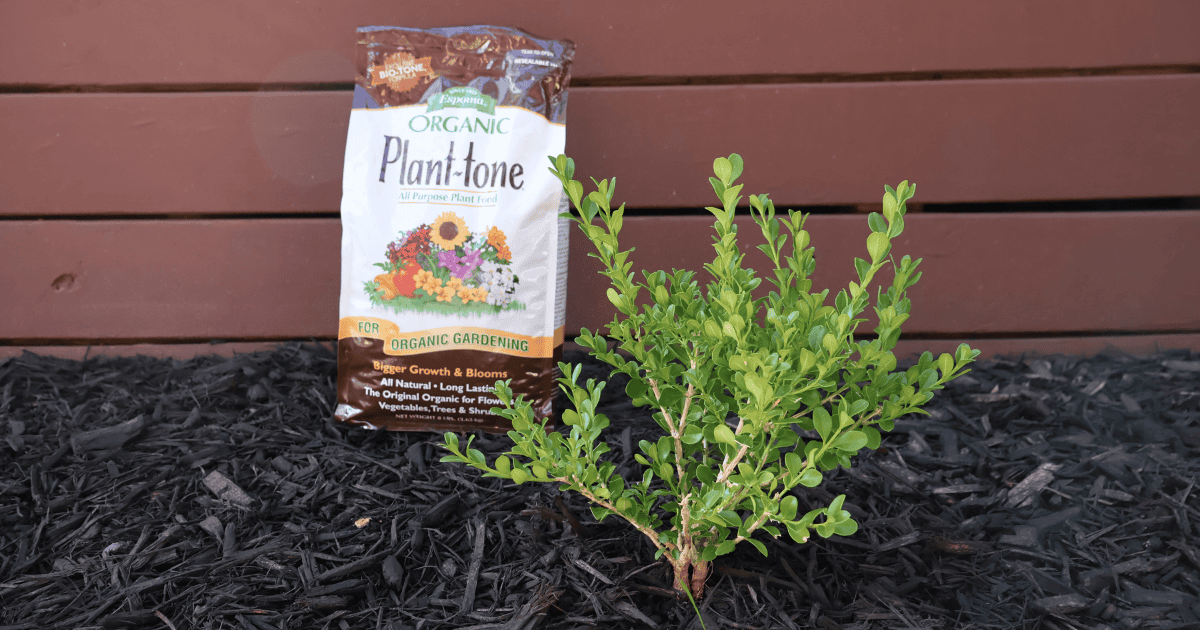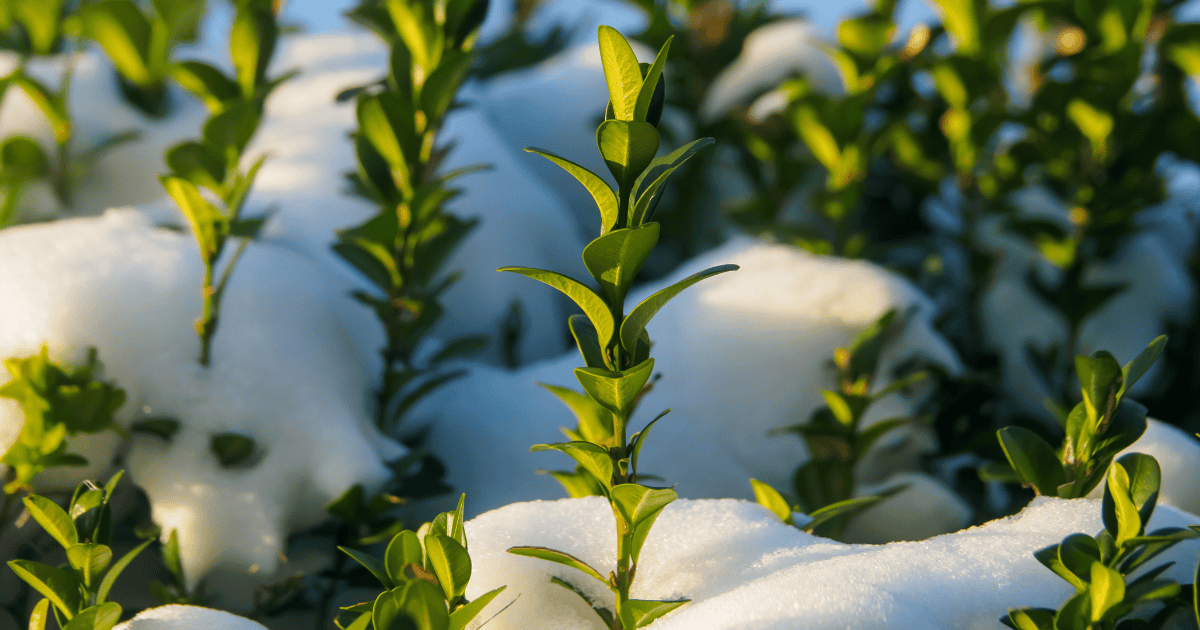
Boxwood shrubs are low-maintenance plants. They don’t generally require a lot of fertilizer, but the right nutrients at the right time ensure boxwoods grow and develop properly. Good nutrition leads to healthy plants that are better able to withstand environmental stresses and pest pressure. Boxwoods growing in the ground have different nutrient needs than those in pots or planters. Learn when and how to feed or fertilize Better Boxwoods in gardens and containers to maintain strong, resilient plants.

Boxwood Nutrient Needs
Like all plants, boxwoods rely on three primary elements to support their growth: nitrogen, phosphorous, and potassium. Additional micronutrients and trace elements are also important. Magnesium promotes a beautiful green foliage in boxwood shrubs, while calcium strengthens plant cells and supports root growth.
When nutrients are in short supply, plant growth suffers and leaves will start to show signs of deficiency. Early symptoms include yellowing of the lower leaves, which is more pronounced on older foliage. Leaves may develop yellow edges, and often grow smaller and thinner than usual. Nutrient deficient boxwoods are also more susceptible to bronzing in winter.
Soil pH is another important consideration. The ideal soil pH for boxwoods is 6.5 to 7.0, however, plants tolerate soil with pH between 5.5 and 7.5. When soil pH drops below this range, apply lime to raise the pH. In addition to neutralizing soil acidity, lime supplies calcium to the soil.

Start with a Soil Test
Every soil is different, and therefore so are a garden’s fertilizer needs. Soils may be deficient in some nutrients, but plentiful in others. For example, potassium and phosphorous are often readily available in clay and loamy soils without the addition of fertilizer. A soil’s composition and pH impact how available soil nutrients are to plants. Sandy soils do not hold on to nutrients as well as clay and loam, and they may require more supplemental nutrition.
The best way to determine fertilizer needs is to conduct a soil test. Your local county extension office will have instructions on how to collect soil for testing and will send your sample to a soil lab for analysis. You will receive detailed information regarding your soil’s pH, organic matter content, and nutrient makeup, along with recommendations specific to your site for adding amendments and fertilizer.

Selecting Fertilizer for Boxwood Plants
Soil test results will indicate which nutrients you need to apply. Fertilizer bags are labeled with the composition of the three primary nutrients in large numbers, listed in this order: nitrogen, phosphorous, and potassium, or N-P-K. For example, a balanced fertilizer may be labeled 10-10-10, while a nitrogen rich fertilizer might have the ratio 16-0-0, indicating it does not contain phosphorus or potassium.
Boxwoods typically benefit from fertilizers with more nitrogen (N) and potassium (K) than phosphorous (P). Micronutrients and trace elements will be listed on the back of the package. When selecting fertilizer, look for products that contain magnesium in addition to the primary elements.
Slow-release fertilizers are ideal for feeding landscape plants and boxwoods growing in containers. These products provide nutrients over a longer period than rapid release fertilizers, which limits the risk of burning boxwood’s shallow root system. Slow-release fertilizers usually come in the form of coated granules that break down to release nutrients over five to six months. As such, a single application is all that is needed to feed boxwoods. Product labels list the recommended rates for plants growing in containers and garden beds.
Organic fertilizers also release nutrients slowly over time and can be another good choice for boxwoods growing in the ground. Organic fertilizers tend to break down in 6 to 8 weeks, so two applications per season are needed to meet the nutrition needs of boxwood shrubs. Both products can be applied to the soil surface and do not need to be worked in, however, applying before a rain or irrigating after application is ideal.

When to Fertilize Boxwood Shrubs
Conduct soil tests prior to planting new boxwood shrubs and add fertilizer and any recommended amendments to the soil when preparing for planting. Typically, one application per year is all that is necessary. For older plants, test the soil every two to three years and make fertilizer applications according to test results.
The best time to fertilize boxwoods is in early spring. Spring applications supply plants with abundant nutrition during active spring growth and remain available into the growing season. Avoid late summer and early fall applications, as these can promote new growth that doesn’t have time to harden off before winter. If using organic fertilizer, make your first application in mid-spring and a second application eight weeks later.

How to Apply Fertilizer
Boxwood plants have a wide, shallow root system that is sensitive to over fertilization. Only apply fertilizer at the rate recommended by soil test results or the package label to prevent burning. Broadcast the fertilizer on the soil surface, extending beyond the plant crown to cover the entire root area. Avoid direct contact with foliage, stems, or roots. There is no need to work slow-release or organic fertilizers into the soil however, if rain is not expected within a couple days, irrigate the fertilizer area to settle the product in place.
If plants are mulched, do not rake away mulch before applying fertilizer, as boxwood plants often develop surface roots growing just below the mulch or soil surface. Applying fertilizer directly to these roots can cause burning. Fertilize mulched plants by broadcasting the fertilizer on top of the mulch. Irrigate following application if rain is not expected.
Boxwoods are undemanding plants, but they do benefit from proper nutrition. Basing fertilizer applications on soil tests ensures plants receive the nutrients they need to thrive while protecting the environment from unnecessary fertilizer applications. Careful product selection and application protects sensitive roots against burning while promoting healthy plants and lush, green foliage.


